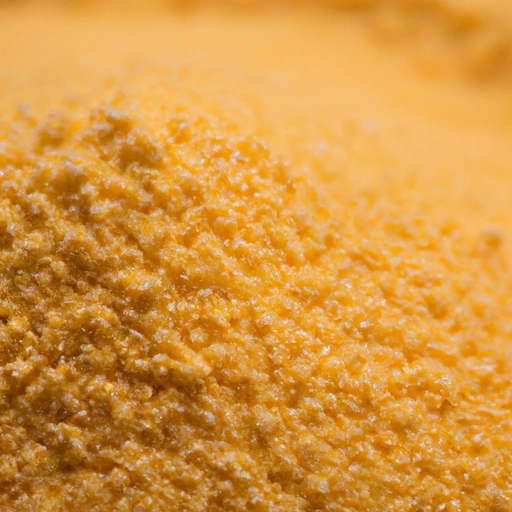Cornmeal
Description

Cornmeal is a coarse flour ground from dried maize (corn). It is a staple ingredient in many parts of the world and is known for its versatility in cooking and baking. Cornmeal can come in various grinds from fine to coarse, each lending a different texture to the final dish. In recipes, cornmeal is often measured in cups (US) or grams (European), with an approximate weight of 157 grams per cup (azjan units are not a standard recognized measurement system).
Common uses
Cornmeal is used as a base for porridges, a thickener for soups and stews, and a primary ingredient in baked goods like cornbread and muffins. It's also employed as a coating for fried foods, offering a crispy texture. In the culinary world, cornmeal's applications are diverse, ranging from Italian polenta to American corn dogs.
Nutritional value
Calories
Per 100 grams, cornmeal typically contains about 384 calories.
Protein
Cornmeal is a moderate source of protein, offering about 8 grams per 100 grams.
Fat
Cornmeal contains approximately 3.9 grams of fat per 100 grams.
Carbohydrates
Most of cornmeal's calories come from carbohydrates, with about 81 grams per 100 grams.
Vitamins
Cornmeal is enriched with vitamins, particularly B vitamins like folate and thiamine.
Minerals
It is a good source of minerals such as iron, magnesium, phosphorus, and zinc.
Health benefits
Due to its fiber content, cornmeal can aid in digestion and help lower cholesterol levels. The B vitamins present in cornmeal are essential for energy production and brain health. Additionally, the antioxidants found in cornmeal can protect against oxidative stress and inflammation.
Potential risks
Those with corn allergies or sensitivities should avoid cornmeal. It is also high in carbohydrates, which may not be suitable for people following a low-carb diet.
Common recipes
Common recipes include cornbread, corn muffins, polenta, cornmeal pancakes, johnnycakes, and arepas.
Cooking methods
Cornmeal can be boiled, baked, fried, or grilled, depending on the desired outcome. It's a flexible ingredient that can be adapted to numerous cooking methods.
Pairing with other ingredients
Cornmeal pairs well with cheeses, especially in polenta dishes, as well as with vegetables, beans, and meats. It complements both sweet and savory flavors.
Summary
Cornmeal is a widely-used food ingredient known for its rich history and culinary versatility. Offering nutritional benefits like fiber, vitamins, and minerals, it can be incorporated into various recipes and cooking methods. Despite its high carbohydrate content, cornmeal remains a beloved staple in diets around the world.